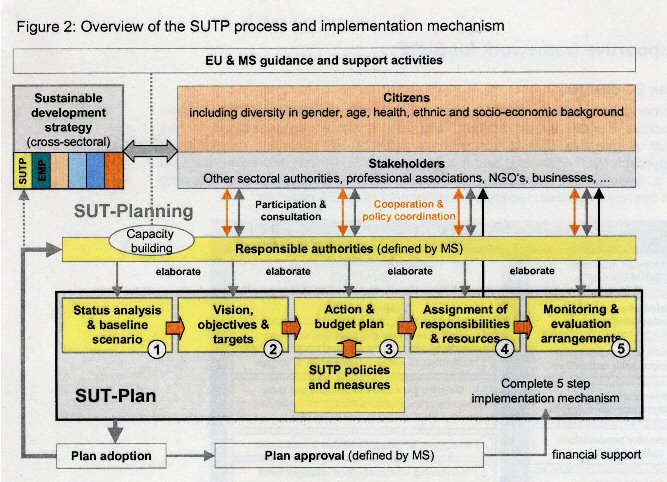Why are all these steps necessary?
This process may seem somewhat idealised, but it has several virtues.
It provides a structure within which participation can be encouraged
at all the key stages in decision-making. It offers a logical basis
for proposing solutions, and also for assessing any proposals suggested
by others. If the answer to the question “what problems would
this strategy solve?” is unconvincing, the solution is probably
not worth considering. It ensures that the appraisal of alternative
solutions is conducted in a logical, consistent and comprehensive
way against the full set of objectives. It provides a means of assessing
whether the implemented instruments have performed as predicted,
and therefore enables the models used for prediction to be improved.
It thus provides the essential source material for our Policy Guidebook.
Finally, regular monitoring provides a means of checking not just
on the scale of current problems, but also, through attitude surveys,
on the perception of these problems.
How closely is this structure adopted in practice?
It is important to stress that few cities follow this logical approach
in its entirety. This is clear in the four case studies which we
present in Section 16. However,
where they have not done so this has often led to weaknesses in
their overall strategy:
- Policy instruments suggested without being clear which problems
they would overcome or whether they are the best solution
- Strategies developed without considering the likely barriers
to their implementation
- Appraisal against selected objectives, thus overlooking some
adverse impacts
- Implementation without checking afterwards whether the strategy
is operating as planned
It is to avoid these pitfalls that we recommend that the full sequence
be followed where possible. However, a few elements are optional;
we identify these in later sections.
The structure which we advocate matches closely that proposed by
DGEnv for Sustainable Urban Transport Plans, as shown in the diagram,
which also indicates the linkages with citizen and stakeholder participation
and with wider urban strategies.

|




